We may think of pulps or pulp fiction as gritty crime noir in which cynical not-the-cops characters fight the basest kind of criminal committing the basest kind of crime. But “pulp” is actually a kind of paper, just as “tabloid” is actually a newspaper with a single, central fold. But the pulps took on the meaning of the kind of stories printed on that paper just as tabloids took on the meaning of the kind of stories in newspapers folded that way. Both pulps and tabloids looked to a salacious world where danger always lurked, the scantily clad lovely female and the hero who would save her, and an undisclosed belief that this dark world will get you unless you are lucky.
For example, twice a bullet that would have killed the Shadow was deflected by a cigarette case. Caution, smoking from a soft pack may be hazardous to your health.
So tabloids wrote about both random disasters and extraordinary luck like lottery wins or miraculous survival, all based on a belief you couldn’t control your fate in this world. In the same way, the heroes of the pulps may have had great advantages of magical powers, scientific marvels, and superb training, but every one of them would have died at some point in their adventures without extraordinary luck. The difference was in the pulps, characters fought to control their own destinies rather than submit to them.
This is kind of appropriate, because pulps publishing (like early comics) was always a business of luck and quick changes. Pulp paper was cheap, keeping production costs down, and that was its one big advantage.
Pulps printed stories in a number of genres including stories of aviation adventure, airships (a subgenre), horror, romance, science fiction and, perhaps most notably and lastingly, crime noir. But there was that binding theme of the world the characters lived in. In noir, it wasn’t just a matter of breaking laws, this was crime that came from a dark soul and made it darker.
The pulps had characters with names like Black Mask, Conan the Barbarian, Fu Manchu, the Black Bat, the Avenger, Buck Rogers, Kull, Ka-Zar, Nick Carter, the Spider, Doc Savage, and Zorro, all of whom are probably recognizable to readers of Blastoff.
If they were so great, why did the pulps end? Three reasons, basically. First, World War II came and all publishing suffered paper restrictions. Second, World War II came and the urban crimes and adventures in distant strange lands seemed less exciting. Street crime and criminal conspiracies were replaced by Nazis and the entire Japanese race. Third, World War II came and turned depression into prosperity. The crime that was once endemic was now made “other” as “hooligans” became “juvenile delinquents.” Crime was no longer of the streets and back rooms, but of the slums and hidden rooms. And people could afford more expensive entertainments.
Attitudes changed again and the pulp characters and ideas have returned through comics, movies, television, and their original home of magazines. They came back because they tell a story about our fears of who we are and our hopes of who we need to be. But their most potent contribution to culture in a real sense has not returned. Let’s explore him.
A MEME
You know the kind of internet thing that goes from person to person? Like that picture of a kid at his sixteenth birthday party and a naked women jumps out of the cake and it’s his mom and someone takes his picture and it goes all over the internet? In the thirties they had better memes.
One of those memes came when, to boost sales, Detective Stories Magazine had its stories put on radio. They decided to have a narrator and give him a sinister voice. So Detective Story Hour had a narrator called the Shadow.
It turned out the narrator was more interesting than the stories he was narrating. People kept talking about it and dropping his tag-line in conversation. ‘What evil lurks in the hearts of men? The Shadow knows.’ That was the ‘I’ll be back’ of its day. Spotting the main chance, the team expanded on the idea. The Shadow became a character in 1931.
But not on radio.
NOT ON RADIO
The Shadow as a meme started on radio in 1930. As a character he started in the pulps in 1931. This is one of those cases where everyone thinks they know something but they don’t. A lot of people will think Lamont Cranston went out with his hat, scarf, and trench coat to cloud men’s minds as the Shadow.
Nope.
In the pulps, the Shadow has no superpowers and did not journey east to learn even non-superpowered mysterious ways. This version of the Shadow is a normal person who operates in the shadows. And there were very practical reasons for arranging this way.
The Shadow came out in The Shadow Detective Magazine and that magazine came out twice a month. Each issue contained one full novel of the Shadow’s adventures. Do the math. Literally. A novel of the time would be about 50,000 words, though in these magazines they were longer than this. But let’s use the lesser number. The worst period to write would be from the 15th of February to the 1st of the March. That would be 14 days or 3671 words a day. That’s about 15 pages on a manual typewriter. No word processing back then. No electric typewriters, either, you had to pound it out.
They hired Walter B Gibson to do this. Generously, they sometimes hired him some help. Sometimes. And everybody shared the byline of Maxwell Grant. But Walter Gibson must have known the way writing works.
If the Shadow could cloud men’s minds that was all Gibson could write. “The Shadow clouded the minds of the evil criminals.” Only 3662 words to go – today.
But if the Shadow has no powers, he could write, “The Shadow saw an upholstered grandfather chair in the corner, he was about to hide behind it but thought better of the idea. There was a grandmother chair in the other corner, a darker corner. He hid behind that just as the evil criminals came into the room…” Now only 3623 words to go to have the same effect on the plot. Also, you have that moment of rethinking it which raises the tension in the story.
Of course, a narrator describing all that on radio would kill the show. So they didn’t do it. They made the Shadow ‘cloud men’s minds’ instead. They did not make him invisible. I think that was at least partly because that would eventually, inevitably lead to having to describing someone trying to catch the invisible Shadow.
PULP VERSUS RADIO
There were other differences between the two characters, though both of them had a literally take-no-prisoners attitude to the big time criminals they faced. They both had twin semi-automatic handguns. They had the same catchphrases, including ‘the weed of crime bears bitter fruit.’ Both were basically designed to look like a bad guy but be a good guy, something not that uncommon at the time, but there is more to it than that.
But the Shadow of the pulps is not the Shadow of the radio show.
Everyone knows the Shadow is really Lamont Cranston, except, no he isn’t. In the pulps he doesn’t have the power to cloud your mind, so he never went to the east to learn to do it. Instead, the Shadow is Kent Allard, a fighter pilot in World War I. Kent came back deciding to use his war-forged skills to shoot criminals rather than enemy pilots. It’s a human trope that fighting crime is a war and it’s particularly common in crime noir.
Detectives don’t run after criminals there, it’s the victim or a self-proclaimed vigilante. The police are usually corrupt, so they are more inclined to revictimize the victims to get them to shut up and pay up, more inclined to obey the crime boss than catch them, and more concerned with their careers than their duties.
In his flying days he was called the Black Eagle. That name was later taken by an African-American pilot who was flying in Ethiopia and that may be why the name was retconned to the Dark Eagle.
Kent Allard fakes his death in South America and comes back to New York City where he becomes the Shadow to take on the darkest of criminals who commit the darkest of crimes. He faced not only criminals, but a corrupt and incompetent system. Remember that American censorship of the times prevented certain crimes from being described directly in fiction. So there was violence and threat, there were robberies, there was little that was sexual, But one thing the pulps had that other media did not was drug crimes.
He also takes on a number of other identities. In this he is like Sherlock Holmes and early Batman. He is unlike the radio Shadow, who does not use and does not need disguises. He is also like the other two who do use disguises.
Sherlock Holmes wore no mask, so he needed a disguise to be able to listen in on conversations and otherwise gather evidence. He put work into this. For example, he dressed as a beggar not because he had an active case but because he was learning how to play the part faultlessly. But his disguises are not characters in their own right.
Batman began as a master of disguise. He could not only disguise himself as nobody in particular, he could take the roles of known crooks to get information. In the 1949 serial, Batman and Robin, not only does Batman disguise himself, he expertly disguises his butler, Alfred. Over time, these skills have been dispensed with so that virtually the only thing left is his character of Matches Malone in the animated stream.
By contrast, the Shadow of the pulp novels has a series of disguises with a twist not often seen. The Shadow disguises himself as other people who really exist. At first sight, this seems an extremely high risk gambit with little benefit. After all, what if the real person shows up?
So the Shadow is businessman HenryArnaud, elderly Isaac Twanbley, and, of course, Lamont Cranston. It is Cranston who shows up and challenges the Shadow with, basically, identity theft. The Shadow threatens Lamont Cranston with, basically, more identity theft. They come to an accord that wealthy Lamont Cranston will keep his fortune and the Shadow will keep using his identity and likeness as a wealthy man about town not named Bruce.
In the pulps, Allard and Cranston physically resemble each other, which facilitates the disguise.
On radio only one man exists. The Shadow is Lamont Cranston, was never a fighter pilot, does not use disguises or alternate identities, and never fakes his death in South America. Oh, and he did go to Asia to learn how to cloud men’s minds, which was the sum total subterfuge he needed against his many opponents. And in the best of crime noir traditions, he was just as cynical as his pulp counterpart.
The Kent Allard pulp Shadow uses agents a lot. Again, wordcount is raised by saying the Shadow went to see an agent, naming the agent, describing them and where they are, and having them describe what they’ve learned and how. A radio show, however, has to pay for each of the actors to talk and have to find a way to keep the different characters easily distinguished.
In the end the radio show did not have a way to make so many characters sound that different. So the main characters were limited to the Shadow/Lamont Cranston (initially played by Orson Welles), Commissioner Weston, and Margot Lane (initially played by Agnes Moorehead, who was later Endora on Bewitched).
The odd thing is that Margot Lane was created for the radio show, appearing first there and only later in the pulps where her name was spelt Margo Lane – there she was truly hated by a wide portion of the readership. In that she was the Harley Quinn of her day but nowhere near as accepted. Which is interesting: a capable woman focused on justice is less acceptable than a sexually tortured homicidal maniac.
Lane was initially described as his lover but was later described as his friend and companion. It was a climbdown that the 1994 movie could not reverse.
In the pulps, the Shadow has a couple dozen agents though not all of them appear in any one story. There’s Shrevvy, a cab driver. You know how people talk in front of cab drivers. He made it to the radio show, too.
On the other side of the social scale is the stockbroker, Rutledge Mann. There is Dr Rupert Sayre, who patches The Shadow up after his many wounds from crime fighting. There is a wrongly convicted man, a self-reformed criminal, and a man who helps rehabilitate criminals. There is a newspaper reporter, and so on. Most social positions are covered and the Shadow’s agents form a kind of meritocracy in miniature.
Like later comic books, one of the tools of the pulps was the repeating character. In radio, like in movies, characters are fewer in number and – except for main characters – likely to show up only once or twice. Look at the typical sequel: it’s the main character and maybe their best friend who comes back, the rest of the cast is new. Odd, considering there is almost always a romantic subplot in Hollywood movies – what happens to the woman he worked so hard to win? Probably the same thing that happens to the wives of superheroes – they get retconned out of existence.
ENEMIES
In pulps like in crime noir generally, there are a lot of criminals who just get killed in the story. They come, they menace, they get shot. The Shadow shows little hesitation to shoot and little (if any) remorse for having shot. Remarkable considering he doesn’t miss and doesn’t shoot to wound. This is true whether he is on radio or in the pulps. He doesn’t kill so often in comic books or newspaper strips, though (kind of a pity).
Both Shadows have Shiwan Kahn as his Joker or Red Skull. He started in the pulps and moved to radio, movies, and is still the Shadow’s chief nemesis in the comics, today. This is not much of a surprise, because Shiwan Khan is what the Shadow might be if the Shadow gave in to temptation. But this is true more of Lamont Cranston than Kent Allard.
He has other return villains, but Dr Rodil Mocquino, the Voodoo Master is not PC enough, and somebody else took the name of the criminal organization, Hydra. But it was Hydra that made Lamont Cranston (not the Shadow) and Kent Allard (is the Shadow) team up, because every time one leader is caught, two new leaders take their place. Tellingly, though, the Shadow’s Hydra is a criminal organization, Marvel’s is from the spy genre.
The Shadow also dealt with serial killers a fair few times, presaging the current fad for serial killers on modern television.
He faced the Prince of Evil whose thing was torturing people phsyically and psychologically. The Salamander who was a pyromaniac with a plan. The Black Falcon was a spy who knew Kent Allard back when he was Kent Allard. And so on. But these were ordinary criminals.
When it came down to it, one crime to rule them all, one crime to find them, one crime to bring them all, and in the darkness bind them; the conspiracy to take over the world. The Shadow, in whatever form, faced that kind of thing a lot. Shiwan Khan was introduced with a plot to hypnotize arms manufacturers to give his private army the latest and the best weapons so he could conquer the world.
The Voodoo Master, whose real name of Mocquino sounds like a new kind of coffee, could hypnotize people into being mindless minions. They weren’t dead, but the analogy between converts and zombies is an old one, and like Shiwan Khan, The Voodoo Master’s plans were to take over usually (but not always) including the spreading Voodoo in the United States.
COSTUMES
Most people remember how the costumes of Batman and the Flash differ from Earth Two to Earth One. The two Shadows have different costumes, too. As different, in fact, as the costumes of Zorro in the movies and in the pulps.
The Shadow of the radio serials has the more familiar costume of a broad-rimmed black hat, a red scarf wrapped around his face under the nose with tails left to trail behind him, and a black inverness. In the pulps he wears a black suit and a black cape with red lining with an upturned collar, and a broad-rimmed black hat or fedora. The differences are more in line with the two Batmen rather than the two Flashes, but they are very real. You could tell the two of them apart if they were standing next to each other.
ALL TOGETHER
So, the two Shadows have different secret identities, different costumes, and one has superpowers and one doesn’t. Kent Allard is a little like Jay Garrick, the original but the lesser known. Lamont Cranston, like Barry Allen, came second but is more famous and is more powerful. The two forms of the Shadow are distinct, at least to fanboys like me.
Why was the radio Shadow so much more successful? At least part of it is audience reach. Most people will know the most popular version as if it’s the only version. After years and years of reading comic books, most people will know Marvel from the movies. Radio got to more people than the pulps. That made the Lamont Cranston version of the Shadow the obvious choice for movies, serials, two television series, and comic books.
And for those media, the power to cloud men’s minds is a boon. Where a novelist writing two books a month needs ways to extend descriptions, all the other media need to condense it. So the many agents had to be reduced to a few, the many tricks, devices, disguises, and alternate identities all had to become something simpler. However you cut it, the Shadow who can cloud the minds of men is probably the right one to carry the legend into the twenty first century, I just wish the other one was still around. Also, they should shoot more people, but just the bad ones.
But I wondered if I wasn’t taking all this too far. So I asked Joseph Rybandt, the editor at Dynamite Entertainment, responsible for the Shadow in solo and group adventures like the latest, Masks 2.
“I think at this point, the Shadow is a distillation of all the previous iterations. Writers can pick and choose what elements they want to incorporate and be true to. It not dissimilar to other longstanding characters like Batman or Superman, there’s touchstones that form the whole. We’ve done different iterations, across different timelines and settings and our ultimate goal is to tell a great story, and stay true to the core of the character.”
So the history works together and the overriding point is not canonical purity but telling a great story so people will want to remember it. I don’t know, wrapped in the history of the thing, the distinction between the two interests me.
On the other hand, Joseph Rybandt is involved in the creation of new stories. That probably gives him a different perspective on things. But then again, I like the Shadow at the moment and it’s his view that’s creating those stories.
I need more information – when’s the next issue of Masks out?
D. Jason Cooper writes what he can, when he can. His “American Refugees” is in Black Chaos II, just out from Big Pulp and available on Amazon.

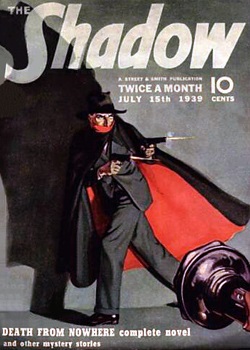
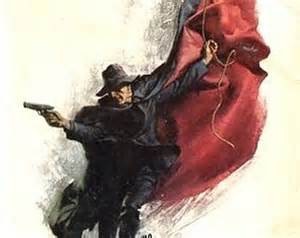
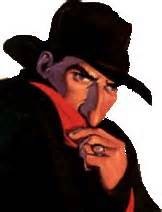
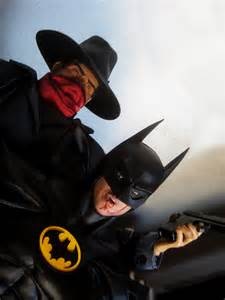
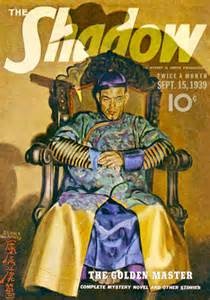
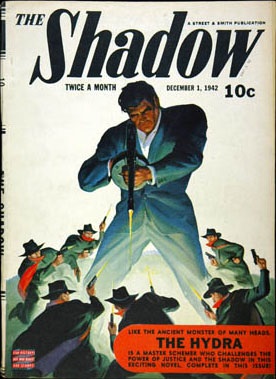
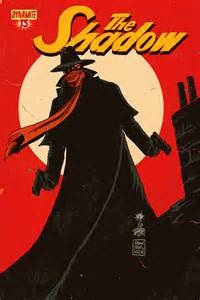
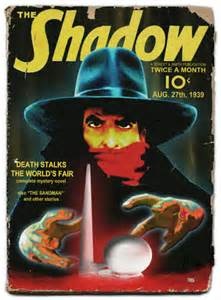
Comments are closed.